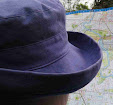 | |
| The Morgan brothers, from left Cecil, Leslie, Weldon and Ernest. |
Reports in Melbourne newspapers reveal that the Morgan parents had made a trip to England, returning in December 1917.
"Mr. W. J. Morgan, of Cadbury Bros. Limited, who is shortly leaving for London, was the guest of the Victorian Confectionary Importers' Association at a special meeting yesterday. On behalf of the members, Mr. A. D. Price presented Mr. Morgan with a letter, signed by all the members, expressing their appreciation of his services and their goodwill, also a smoker's outfit. Mr. Morgan has four sons fighting at the front, and he and Mrs. Morgan are leaving for London to be near them".
The Argus 31 March 1917 http://nla.gov.au/nla.news-article1607569
"Mr. and Mrs. W J. Morgan, of 11 Robb street, Essendon, have recently returned from England, where they met their four sons, who are on active service. Since arriving in Australia they received advice that their youngest son, Ernest of the 7th Battalion, had been wounded on October 4th. He is improving. They have just learned that Private Leslie Morgan, of the 8th Battalion, is being returned, and will probably arrive by the end of the year. The other two brothers are with the forces in France".
The Essendon Gazette, 20 Dec 1917 http://nla.gov.au/nla.news-article74604664
Looking at the brothers' service records, there seems to have been a very brief window of opportunity for this reunion to have taken place, when all of the brothers were in England - between 30 June 1917 and 4 July 1917. All of them were in the vicinity of London. On 5 July Weldon Morgan proceeded overseas to France, and was killed in action on 4 October 1917. It was not until the end of December that the authorities advised his next of kin of his death, so that when the news item appeared, his parents had not yet been told that Weldon was killed on the same date as his brother Ernest was wounded.
While it seems incredible that civilians were making their way to the UK to pay visits to relatives in the face of hostile events at sea, it appears that they did. They departed on passenger vessels whose departure dates were listed in the daily metropolitan newspapers.














